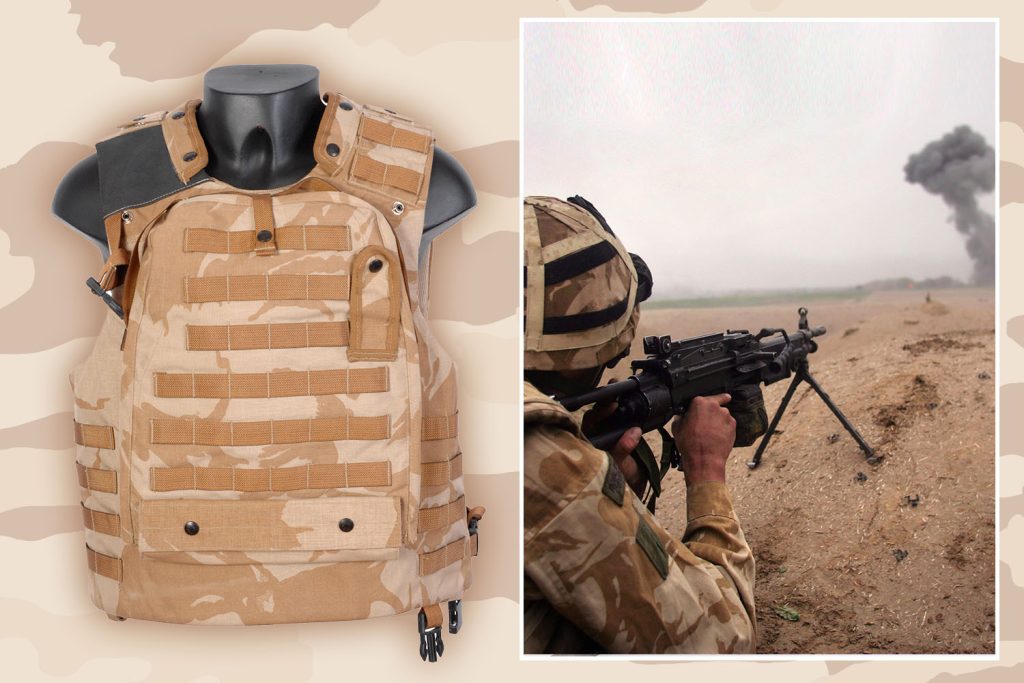The British Armed Forces are grappling with a critical safety issue concerning their standard-issue body armour, known as Enhanced Combat Body Armour (ECBA). Recent shock test results have revealed cracks in the ceramic plates designed to stop bullets, prompting a large-scale recall and raising serious concerns about the safety of troops in operational environments. This discovery has sparked urgent action from defence chiefs to secure replacement armour and address the potential for life-threatening vulnerability faced by service personnel. The ECBA, which has been in use since the 1980s, was originally slated for replacement in 2023. However, this plan was postponed due to budgetary constraints, a decision that is now under intense scrutiny.
The extent of the problem is significant. The Army, Navy, and RAF collectively possess at least 120,000 sets of the potentially faulty ECBA. Every single plate is undergoing rigorous testing, and preliminary results indicate a failure rate of one in ten. This translates to a substantial number of compromised armour pieces, leaving a significant portion of the forces potentially vulnerable in combat situations. The recall and testing process is a complex logistical undertaking, further complicated by the need to prioritize the allocation of safe armour to those in immediate operational roles.
The situation is particularly precarious for certain units, such as Royal Marine Commandos and sailors at sea. While alternative body armour options like Osprey and Virtus exist, these are unsuitable for these specific roles due to their added weight, which poses a drowning risk in maritime environments. This limitation restricts the immediate solutions available for these personnel and underscores the urgency of finding suitable replacements. The constraints faced by these units highlight the complex interplay between operational requirements, safety standards, and the availability of appropriate equipment.
The Ministry of Defence (MoD) has responded by severely restricting the use of ECBA, permitting its deployment only in “unavoidable circumstances,” a clear indication of the gravity of the situation. Armed Forces Minister Luke Pollard has firmly stated his rejection of a “make do and mend” approach, emphasizing the paramount importance of the safety and operational capability of British forces. This underscores the government’s commitment to resolving the issue and providing adequate protection for service members.
The delay in replacing the outdated ECBA has become a political flashpoint, with accusations of cost-cutting measures being responsible for the current crisis. The original plan to phase out the ECBA by 2023 was shelved, a decision attributed to budgetary pressures. Critics argue that this delay has placed troops at unnecessary risk and highlights the potential consequences of prioritizing financial savings over essential equipment upgrades. The debate surrounding this decision underscores the tension between budgetary constraints and the imperative to provide adequate resources for national defence.
The ECBA failure exposes a critical vulnerability in the protective equipment provided to British forces and raises serious questions about the long-term planning and prioritization within the Ministry of Defence. The scramble to find suitable replacements, the limitations of alternative armour options for specific units, and the political fallout from the delayed replacement program all contribute to a complex and urgent situation. The incident underscores the critical importance of regularly assessing and upgrading essential military equipment to ensure the safety and effectiveness of deployed personnel. The implications of this incident are likely to resonate within the defence establishment and could lead to a reassessment of procurement processes and budget allocation for critical equipment.











